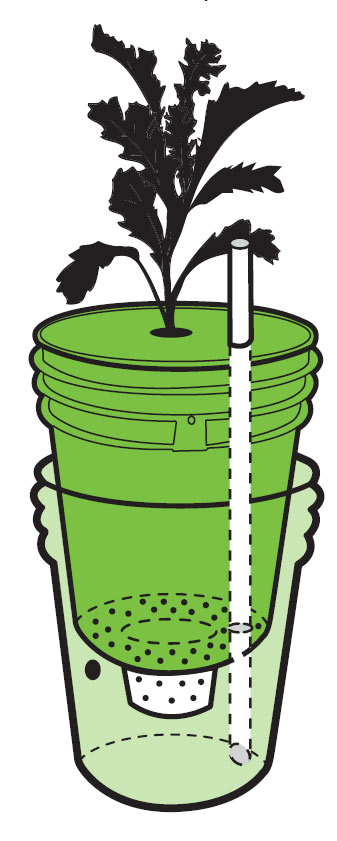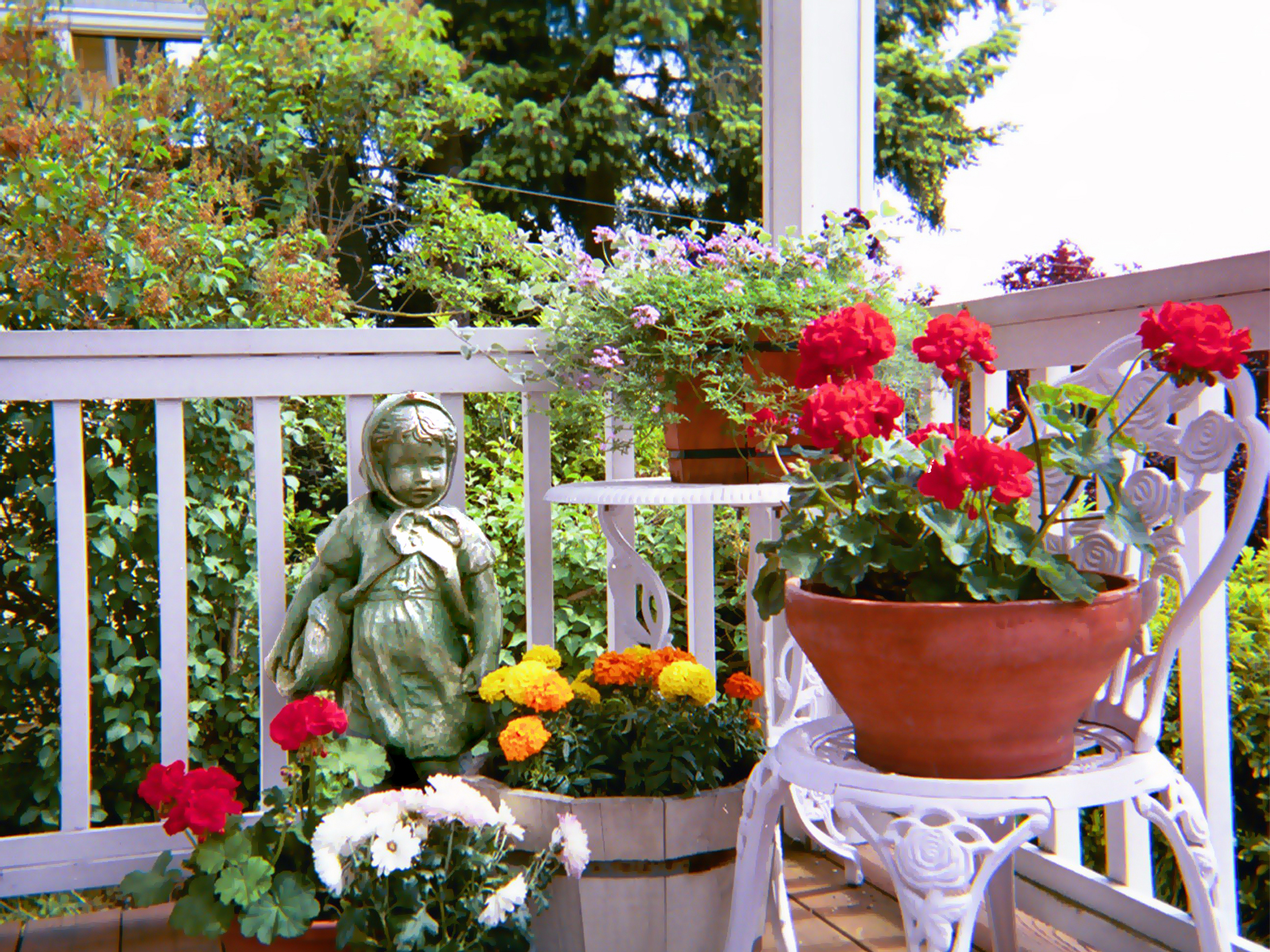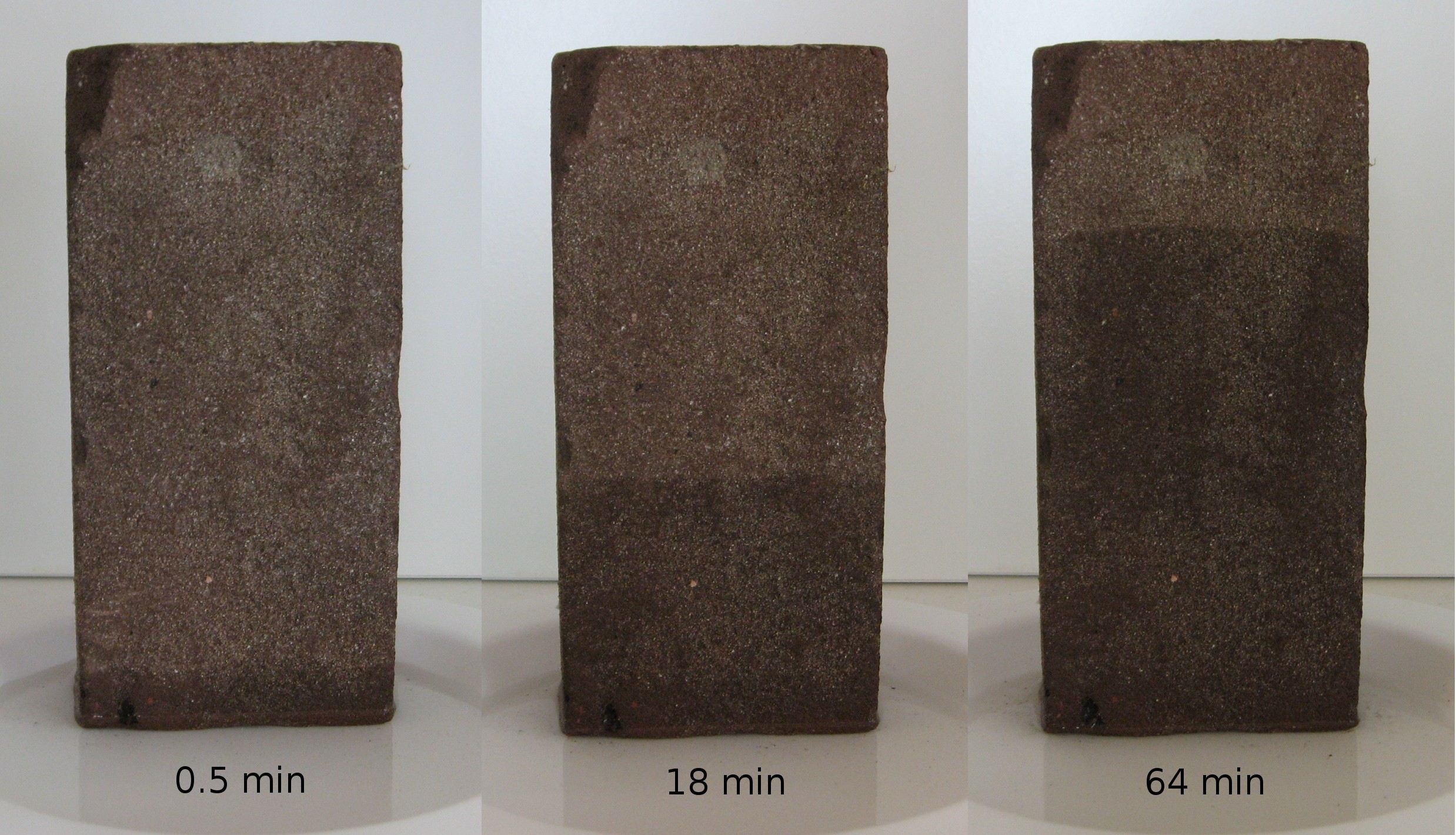|
Sub-irrigated Planter
Sub-irrigated planter (SIP) is a generic name for a special type of planting box used in container gardening and commercial landscaping. A SIP is any method of watering plants where the water is introduced from the bottom, allowing the water to soak upwards to the plant through capillary action. It is possible to automate the watering and thus SIPs are popular with professional landscapers in buildings or urban settings. Commercialized versions of a Sub-irrigated planter condenses humidity from the environment and feed it directly into the plants' roots. SIPs are available as commercial products or as do-it-yourself projects made from plastic buckets, boxes or storage totes. One of the disadvantages of such closed systems is that soluble salts cannot be flushed into the lower soil profile and build up over time. See also * Subirrigation * Wicking bed A wicking bed is an agricultural irrigation system used in arid countries where water is scarce, devised by Australian inventor ... [...More Info...] [...Related Items...] OR: [Wikipedia] [Google] [Baidu] |
Container Garden
Container gardening or pot gardening/farming is the practice of growing plants, including edible plants, exclusively in containers instead of planting them in the ground. A container in gardening is a small, enclosed and usually portable object used for displaying live flowers or plants. It may take the form of a pot, box, tub, basket, tin, barrel or hanging basket. Methods Pots, traditionally made of terracotta but now more commonly plastic, and window boxes are the most commonly seen. Small pots are called flowerpots. In some cases, this method of growing is used for ornamental purposes. This method is also useful in areas where the soil or climate is unsuitable for the plant or crop in question. Using a container is also generally necessary for houseplants. Limited growing space, or growing space that is paved over, can also make this option appealing to the gardener. Additionally, this method is popular for urban horticulture and urban gardening on balconies of apartment ... [...More Info...] [...Related Items...] OR: [Wikipedia] [Google] [Baidu] |
Capillary Action
Capillary action (sometimes called capillarity, capillary motion, capillary rise, capillary effect, or wicking) is the process of a liquid flowing in a narrow space without the assistance of, or even in opposition to, any external forces like gravity. The effect can be seen in the drawing up of liquids between the hairs of a paint-brush, in a thin tube, in porous materials such as paper and plaster, in some non-porous materials such as sand and liquefied carbon fiber, or in a biological cell. It occurs because of intermolecular forces between the liquid and surrounding solid surfaces. If the diameter of the tube is sufficiently small, then the combination of surface tension (which is caused by cohesion within the liquid) and adhesive forces between the liquid and container wall act to propel the liquid. Etymology Capillary comes from the Latin word capillaris, meaning "of or resembling hair." The meaning stems from the tiny, hairlike diameter of a capillary. While capilla ... [...More Info...] [...Related Items...] OR: [Wikipedia] [Google] [Baidu] |
Do-it-yourself
"Do it yourself" ("DIY") is the method of building, modifying, or repairing things by oneself without the direct aid of professionals or certified experts. Academic research has described DIY as behaviors where "individuals use raw and semi-raw materials and parts to produce, transform, or reconstruct material possessions, including those drawn from the natural environment (e.g., landscaping)". DIY behavior can be triggered by various motivations previously categorized as marketplace motivations (economic benefits, lack of product availability, lack of product quality, need for customization), and identity enhancement (craftsmanship, empowerment, community seeking, uniqueness). The term "do-it-yourself" has been associated with consumers since at least 1912 primarily in the domain of home improvement and maintenance activities. The phrase "do it yourself" had come into common usage (in standard English) by the 1950s, in reference to the emergence of a trend of people undert ... [...More Info...] [...Related Items...] OR: [Wikipedia] [Google] [Baidu] |
Subirrigation
Subirrigation also known as seepage irrigation, is a method of irrigation where water is delivered to the plant root zone. The excess may be collected for reuse. Subirrigation is used in growing field crops such as tomatoes, peppers, and sugar cane in areas with high water tables such as Florida and in commercial greenhouse operations. Three basic types of subirrigation system are in general use for potted plants in greenhouses: ebb-and-flow ( bench-mounted enclosures holding pots are filled and then drained); trough (water is flowed through bench-mounted, slightly sloping enclosures containing pots); and flooded floor (special sloped concrete flooring is flooded and drained). Greenhouse subirrigation has been growing in popularity since the 1990s. Advantages are water and nutrient conservation, and labor-saving. The outfitting cost is relatively high. Potential problems, such as the possibility of increased presence of disease in recycle water, have only begun to be investiga ... [...More Info...] [...Related Items...] OR: [Wikipedia] [Google] [Baidu] |
Wicking Bed
A wicking bed is an agricultural irrigation system used in arid countries where water is scarce, devised by Australian inventor Colin Austin. It can be used both in (arid) fields as in containers. Besides use in fields/containers outdoors, it can also be used indoors (i.e. greenhouse). The system is designed to increase food production while using approximately 50% less water than traditional irrigation, by utilizing underground water reservoirs filled with decomposing organic matter and the process of evaporation. Despite being an irrigation system (which can even be fitted with automated refill capability via rainwater tank and float-valve), it still remains relatively low-tech Low technology (low tech; adjective forms: low-technology, low-tech, lo-tech) is simple technology, as opposed to '' high technology''. History Historical origin Primitive technologies such as bushcraft, tools that use wood, stone, whoo .... There are a number of commercially available wic ... [...More Info...] [...Related Items...] OR: [Wikipedia] [Google] [Baidu] |
Irrigation
Irrigation (also referred to as watering) is the practice of applying controlled amounts of water to land to help grow Crop, crops, Landscape plant, landscape plants, and Lawn, lawns. Irrigation has been a key aspect of agriculture for over 5,000 years and has been developed by many cultures around the world. Irrigation helps to grow crops, maintain landscapes, and revegetation, revegetate disturbed soils in dry areas and during times of below-average rainfall. In addition to these uses, irrigation is also employed to protect crops from frost, suppress weed growth in grain fields, and prevent soil consolidation. It is also used to cool livestock, reduce dust, dispose of sewage, and support mining operations. Drainage, which involves the removal of surface and sub-surface water from a given location, is often studied in conjunction with irrigation. There are several methods of irrigation that differ in how water is supplied to plants. Surface irrigation, also known as gravity irri ... [...More Info...] [...Related Items...] OR: [Wikipedia] [Google] [Baidu] |
Gardening Aids
Gardening is the practice of growing and cultivating plants as part of horticulture. In gardens, ornamental plants are often grown for their flowers, foliage, or overall appearance; useful plants, such as root vegetables, leaf vegetables, fruits, and herbs, are grown for consumption, for use as dyes, or for medicinal or cosmetic use. Gardening ranges in scale from fruit orchards, to long boulevard plantings with one or more different types of shrubs, trees, and herbaceous plants, to residential back gardens including lawns and foundation plantings, all the way to container gardens grown inside or outside. Gardening may be very specialized, with only one type of plant grown, or involve a variety of plants in mixed plantings. It involves an active participation in the growing of plants, and tends to be labor-intensive, which differentiates it from farming or forestry. History Ancient times Forest gardening, a forest-based food production system, is the world's oldest form of ... [...More Info...] [...Related Items...] OR: [Wikipedia] [Google] [Baidu] |
Garden Vases
A garden is a planned space, usually outdoors, set aside for the cultivation, display, and enjoyment of plants and other forms of nature. The single feature identifying even the wildest wild garden is ''control''. The garden can incorporate both natural and artificial materials. Gardens often have design features including statuary, follies, pergolas, trellises, stumperies, dry creek beds, and water features such as fountains, ponds (with or without fish), waterfalls or creeks. Some gardens are for ornamental purposes only, while others also produce food crops, sometimes in separate areas, or sometimes intermixed with the ornamental plants. Food-producing gardens are distinguished from farms by their smaller scale, more labor-intensive methods, and their purpose (enjoyment of a hobby or self-sustenance rather than producing for sale, as in a market garden). Flower gardens combine plants of different heights, colors, textures, and fragrances to create interest and delight the s ... [...More Info...] [...Related Items...] OR: [Wikipedia] [Google] [Baidu] |
Urban Agriculture
Urban agriculture, urban farming, or urban gardening is the practice of cultivating, processing, and distributing food in or around urban areas. It encompasses a complex and diverse mix of food production activities, including fisheries and forestry, in cities in both developed and developing countries. The term also applies to urban area activities of animal husbandry, aquaculture, beekeeping, and horticulture. These activities occur in peri-urban areas as well, although peri-urban agriculture may have different characteristics. Urban agriculture can reflect varying levels of economic and social development. It may be a social movement for sustainable communities, where organic growers, "foodies", and "locavores" form social networks founded on a shared ethos of nature and community holism. These networks can evolve when receiving formal institutional support, becoming integrated into local town planning as a "transition town" movement for sustainable urban development. ... [...More Info...] [...Related Items...] OR: [Wikipedia] [Google] [Baidu] |






